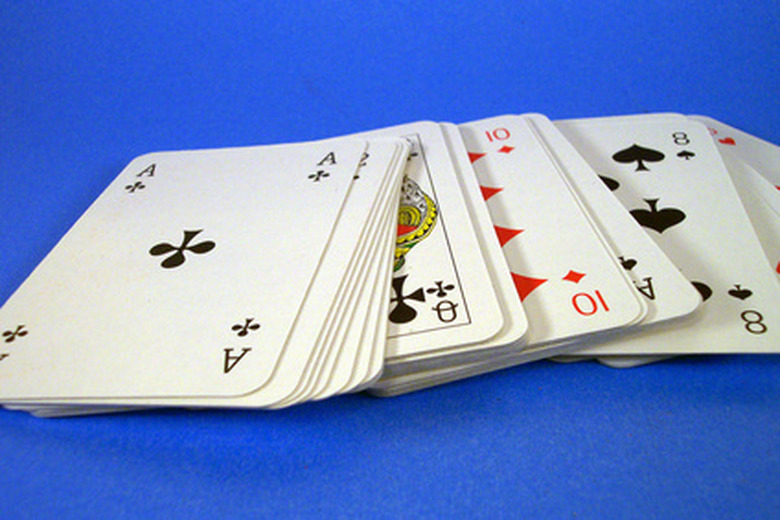Fifth Grade Math Games That Can Be Played With A Deck Of Cards
A deck of playing cards is a versatile tool to help fifth grade students practice vital math concepts. You can model games after common card games with minor modifications to maximize their educational value. In addition, the flexibility inherent in a standard deck of cards offers a multitude of possibilities for creating brand new games specifically designed to help fifth graders practice important skills.
Modify Standard Games for Computation Practice
Modify Standard Games for Computation Practice
One of the focuses of the Common Core State Standards Initiative for fifth grade mathematics is finalizing fluency with the four basic operations. This means that students are to develop the speed and accuracy necessary to solve problems automatically. Card games can help with this goal by acting as flash cards and random number generators. Remove face cards and tens. Play games using only the aces through nines to allow for place value. For example, modify the familiar game of War by turning over multiple cards for each turn and performing a predetermined math calculation on them. The player with the larger answer gets to keep all of the cards in play and the person who has the most cards at the end of the game wins.
Use Cards to Generate Random Numbers
Use Cards to Generate Random Numbers
Fifth grade students develop understanding of concepts about numbers as part of their introduction to algebraic thinking. Use cards to create an endless supply of random numbers for analysis. Remove the face cards and tens from the deck and choose two to seven number cards to create a numeral with multiple digits. Use this randomly generated number to practice prime factorization, application of divisibility rules, or classification as a prime or composite number. Create games that reward players for speed of calculation, finding the largest prime number of the group, or generating a number with the most factors.
Play a Place Value Game with Cards
Play a Place Value Game with Cards
Fifth grade students are expected to expand their knowledge of place value to include millions and decimal fractions. Create a playing board on paper with blank spots to lay cards. Choose a place to insert a decimal if desired. Use a deck of cards with face cards and tens removed, or use one of these as a designated "zero" card. Players take turns choosing a card from the face-down deck and laying it on their board in an empty spot. The player who creates the largest (or smallest) number wins the round.
Create Fraction Games with Playing Cards
Create Fraction Games with Playing Cards
In fifth grade, students are expected to increase knowledge of equivalent fractions, comparison of fractions and calculation with fractions. Use a deck of playing cards with face cards removed. Shuffle the deck and deal two cards to each player. Each player uses the cards to create a fraction by designating the larger number as the denominator and the smaller as the numerator. Players can compare the fractions they've created to discover who has the largest fraction. Alternatively, new rounds of two cards each can be dealt until one player can create a larger or smaller fraction than his or her original fraction. In case of a tie, the player with the largest difference between the original and second fractions wins the round.
Cite This Article
MLA
Fleming, Sandy. "Fifth Grade Math Games That Can Be Played With A Deck Of Cards" sciencing.com, https://www.sciencing.com/fifth-can-played-deck-cards-7897013/. 24 April 2017.
APA
Fleming, Sandy. (2017, April 24). Fifth Grade Math Games That Can Be Played With A Deck Of Cards. sciencing.com. Retrieved from https://www.sciencing.com/fifth-can-played-deck-cards-7897013/
Chicago
Fleming, Sandy. Fifth Grade Math Games That Can Be Played With A Deck Of Cards last modified August 30, 2022. https://www.sciencing.com/fifth-can-played-deck-cards-7897013/
